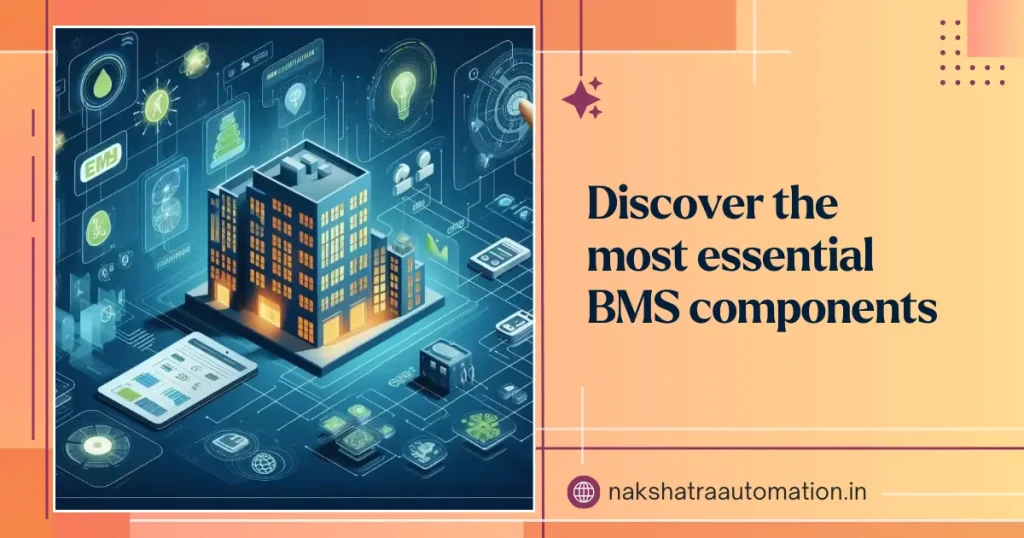Vital BMS Components
Modern buildings are complex ecosystems that require sophisticated coordination between multiple systems to operate efficiently. A professional Building Management System (BMS) serves as the digital nervous system that connects, monitors, and controls every aspect of your building’s operations. Understanding the key components is crucial for anyone considering the implementation of smart buildings.
The Central Control Unit: The Brain of Operations
At the heart of every BMS lies the central processing unit, also known as the building automation server. This powerful computer processes thousands of data points every second, making real-time decisions that optimize building performance. Think of it as the conductor of an orchestra, ensuring every system plays in perfect harmony.
The central controller manages communication protocols, stores historical data, and executes complex algorithms that learn from building usage patterns to improve efficiency continuously.
HVAC Integration and Climate Control
Climate control represents the largest energy consumer in most buildings, making HVAC integration absolutely critical. Professional BMS components include:
- Variable Air Volume (VAV) controllers that adjust airflow based on occupancy
- Smart thermostats and sensors that maintain optimal temperature zones
- Energy recovery ventilators that minimize heating and cooling waste
- Predictive maintenance sensors that detect equipment issues before failures occur
These systems work together to reduce energy consumption by 20-30% while maintaining superior comfort levels.
Lighting Management and Daylight Harvesting
Intelligent lighting systems go far beyond simple on/off switches. Professional BMS lighting components feature:
- Occupancy sensors that automatically adjust lighting based on room usage
- Daylight harvesting sensors that dim artificial lights when natural light is sufficient
- Scene control systems that create preset lighting environments for different activities
- LED fixture integration with dimming capabilities and colour temperature control
Smart lighting alone can reduce electricity costs by 40-60% compared to traditional systems.
Security and Access Control Integration
Modern BMS platforms seamlessly integrate comprehensive security features:
- Digital access control systems with employee credential management
- CCTV surveillance integration with intelligent video analytics
- Intrusion detection sensors for after-hours monitoring
- Emergency response protocols that coordinate with fire and safety systems
This unified approach eliminates security silos, providing complete situational awareness from a single interface.
Energy Monitoring and Analytics
Data-driven insights transform building operations. Professional energy monitoring components include:
- Smart meters and sub-meters that track consumption by system and zone
- Power quality monitors that identify electrical inefficiencies
- Demand response capabilities that reduce peak load charges
- Automated reporting systems that generate detailed energy analytics
These tools enable proactive energy management rather than reactive bill-paying.
Network Infrastructure and Communication Protocols
The backbone of any BMS is its communication network. Professional systems utilize:
- BACnet, Modbus, and LonWorks protocols for device interoperability
- Ethernet and wireless networks for reliable data transmission
- Cloud connectivity for remote monitoring and control
- Cybersecurity measures, including encryption and access controls
Robust networking ensures system reliability and enables scalable expansion as building needs evolve.
User Interface and Mobile Applications
The best BMS components are useless without intuitive control interfaces. Modern systems provide:
- Web-based dashboards accessible from any device
- Mobile applications for on-the-go monitoring and control
- Customizable alerts and notifications for immediate issue awareness
- Role-based access controls that limit user permissions appropriately
Making the Right Choice
Selecting and integrating these components requires deep technical expertise and experience. The difference between a functional BMS and a transformative one lies in proper component selection, professional installation, and ongoing optimization.
Ready to transform your building into an intelligent, efficient workspace? Contact Nakshatra Automation, which brings over a decade of specialised experience in designing and implementing comprehensive building management systems. Our team has successfully integrated these advanced components into commercial and industrial spaces.
Stop managing your building reactively. Take control with a professional Building Management System assessment that reveals hidden opportunities for efficiency.

